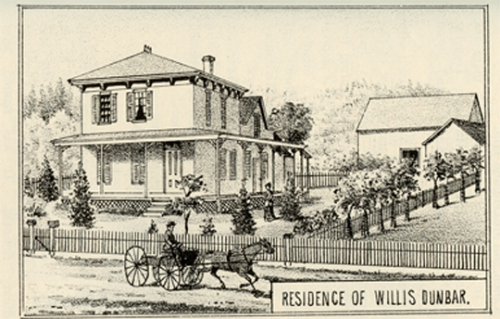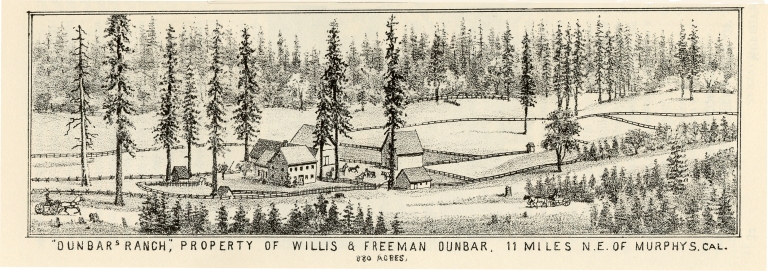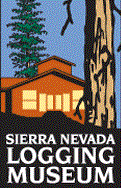Our Community
Sierra Nevada Logging Museum History
Editor’s note: Although those of us who work at, or otherwise are involved in. the Logging Museum come from a number of different communities, and even different counties, when we refer to “Our Community” in reference to the museum, we are talking about White Pines, and sometimes extend that to Arnold.
Back in 1938, White Pines didn’t exist, and the town of Arnold was just two gas pumps owned by the Hazelton family and the Ebbetts Pass Inn operated by Bob and Bernice Arnold. There was no post office, school, community building, golf course, or any of the other things that we think of today. Up the hill, Camp Connell had its small store, and the Dorrington Hotel and Big Trees Park were operating, but the nearest shopping was in Murphys.
It was 1938 when the Blagen Lumber Company, its owners, its workers, and their families all packed up their equipment and possessions, left their homes in Sierra County, and moved to Dunbar Meadow, down the road from the Hazelton’s gas pumps. And an empty meadow was all it was—an open, unspoiled flat of land where Big Trees Creek flowed into San Antonio Creek surrounded by miles of dense, old-growth forest.


Preserving the History of Loggers and Logging in the Sierra Nevada
A road was built to the meadow so the sawmill could be moved in and so work could begin on a new, independent community. It started as a tent city, but the land was quickly subdivided and the new town of 200 people was completed in less than two years. The mill owner’s wife gave it a name, White Pines. Soon, Woods’ grocery store was built and the White Pines Post Office. The Blagen Mill office complex and a new elementary school came along quickly.
The mill helped build a community building that was used constantly for dances, receptions, card parties, community suppers, and voting during elections. The mill even provided qualified medical personnel in case of accidents or emergencies. White Pines was thriving and continued to thrive for twenty-five years.
But by 1962, the mill was obsolete and was forced to close. Without the mill’s paychecks, families began drifting away. The stores closed, and the post office shut its doors. A developer gained control of the mill property and built a dam across San Antonio creek to make a lake; his plan was to build expensive, new condominiums around the lake, effectively creating a new community where the mill and White Pines once stood.
But finally, under pressure from the remaining residents of White Pines and the growing town of Arnold, the county government stopped the development plans, recognizing that the condo community didn’t fit with the rural, country setting of White Pines.
Since then, White Pines has held its own. Today, it is widely recognized as a close-knit community that’s proud of its pioneering traditions. Many of the original mill and logging families are still here and actively involved in the White Pines and Arnold communities. The newer residents are quick to recognize the benefits of small-town life, with nearby schools, safe streets, and good neighbors.
And White Pines’ history is still here. The mill is gone, of course, but the ball field sits where the mill was. If you explore around the field, you’ll see that the old mill pond, now overgrown, is still there. The mill offices are now the Moose Lodge. The old school is now part of Independence Hall, and a new school, named for Miss Hazel Fischer, is teaching today’s kids. The lake was to be surrounded by condominiums in beautiful White Pines Lake.
And on a hillside looking over White Pines Lake and the old mill site, is the Sierra Nevada Logging Museum, preserving the history of loggers and logging for all those with a love of history.
